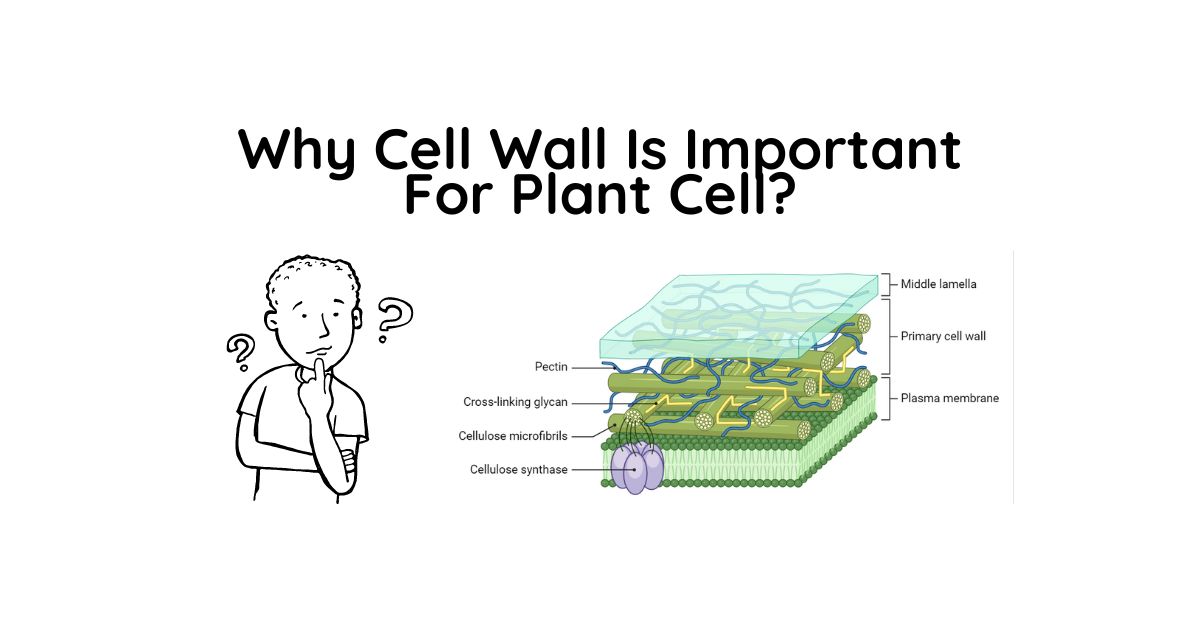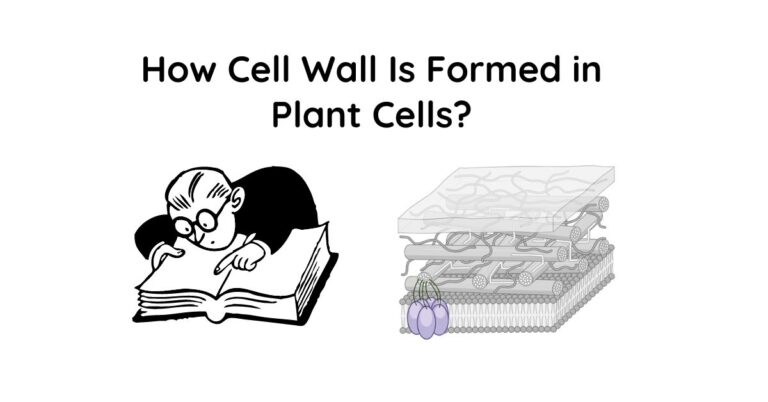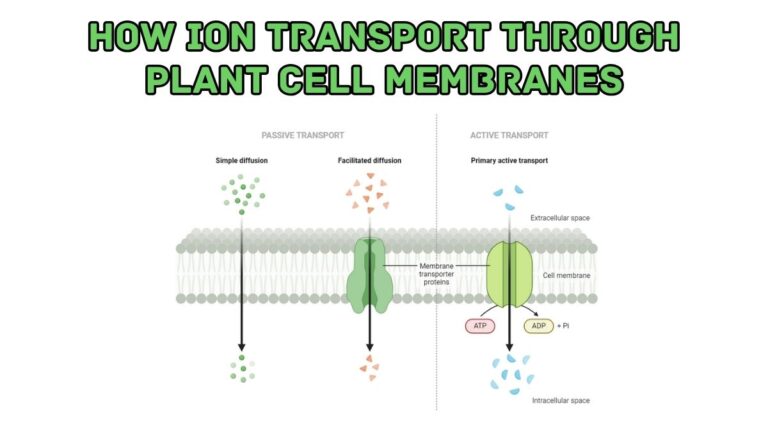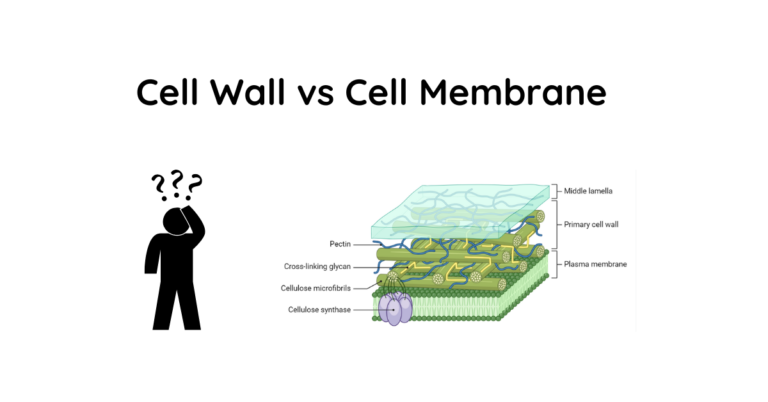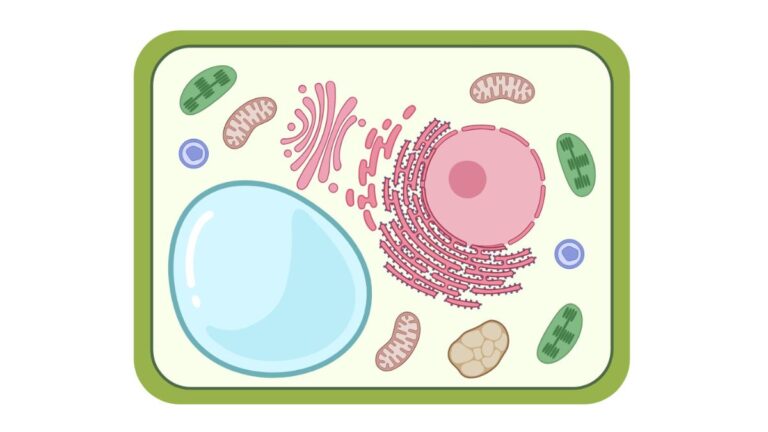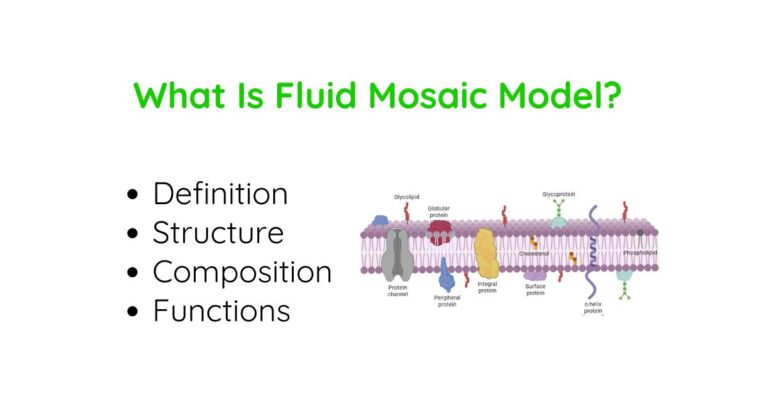Why Cell Wall Is Important For Plant Cell?
The cell wall is crucial for plant cells as it provides structural support and protection. It allows the plant cell to withstand internal turgor pressure and maintain its characteristic rectangular shape. The cell wall also regulates growth by selectively loosening during cell expansion and division.
There are several reasons why the cell wall is important for plants:
| Function | Importance |
|---|---|
| Structural Support | Provides mechanical strength, prevents bursting, maintains cell shape. |
| Protection | Barrier against pathogens, injuries, and environmental stresses. Can reinforce during attacks. |
| Controlled Growth | Regulates cell expansion and division for proper growth and development. |
| Cell Adhesion | Binds cells together into cohesive tissues and organs. |
| Cell Communication | Facilitates cell-cell signaling and coordination. |
| Water Regulation | Selectively allows water and solute movement, maintains turgor pressure. |
| Apoplastic Transport | Enables movement of substances between cells and throughout the plant. |
| Storage | Certain components like cellulose can store energy and carbon. |
| Biomass Utilization | Source of biomaterials, biofuels, and potential for genetic modifications. |
What Is Plant Cell Wall?
Plants are unique organisms that have specialized cells with a rigid outer layer called the cell wall. This structure plays a crucial role in the survival, growth, and overall functioning of plant cells. Unlike animal cells, which lack a cell wall, plant cells rely on this intricate component for various essential processes.
Learn more about cell wall.
Structural Roles
Providing Mechanical Support
The cell wall acts as a sturdy exoskeleton, providing mechanical support and structural integrity to plant cells. Its rigid nature prevents the cells from bursting or collapsing due to the high internal pressure caused by osmosis. This support is particularly important for plants, which lack an internal skeletal system like animals.
Determining Cell Shape
The shape of plant cells is largely determined by the cell wall’s architecture. Most plant cells have a rectangular or cylindrical shape, which is maintained by the cell wall’s rigidity. This characteristic shape is essential for the proper organization and functioning of plant tissues and organs.
Withstanding Turgor Pressure
Plant cells are constantly subjected to turgor pressure, which is the outward force exerted by the cell’s contents against the cell wall. The cell wall’s strength and rigidity allow it to withstand this pressure, preventing the cell from bursting or becoming misshapen.
Enabling Controlled Cell Growth
The cell wall plays a crucial role in regulating cell growth and expansion. During cell division and growth, specific enzymes loosen or tighten the cell wall, allowing for controlled and organized cell expansion. This process is essential for proper plant development and morphogenesis.
Protective Functions
Barrier against Pathogens
The cell wall serves as the first line of defense against pathogens, such as bacteria, fungi, and viruses. Its rigid structure and complex composition make it difficult for pathogens to penetrate and infect plant cells.
Defense Mechanisms
Cell Wall Reinforcement
When a plant is under attack by pathogens, it can reinforce its cell walls by depositing additional layers of cellulose, lignin, or other compounds. This strengthening of the cell wall helps to prevent further pathogen invasion and spread.
Antimicrobial Compounds
Some components of the cell wall, such as phenolic compounds and proteins, have antimicrobial properties that can inhibit the growth and spread of pathogens.
Environmental Stress Protection
The cell wall also protects plant cells from various environmental stresses, such as drought, extreme temperatures, and mechanical damage. Its rigid structure and semi-permeable nature help to maintain the cell’s integrity and regulate water and nutrient flow.
Cell Adhesion and Communication
Intercellular Adhesion
The cell wall plays a crucial role in holding plant cells together and forming cohesive tissues and organs. The pectin in the middle lamella of the cell wall acts as an adhesive, binding neighboring cells together.
Cell-Cell Signaling
The cell wall is not just a static structure; it also facilitates cell-cell communication and signaling. Specific molecules and signals can be transmitted through the cell wall, allowing plant cells to coordinate their activities and respond to environmental cues.
Tissue and Organ Formation
The adhesion and communication functions of the cell wall are essential for the proper development and organization of plant tissues and organs. The cell wall ensures that cells are positioned and arranged correctly, enabling the formation of complex structures like leaves, stems, and roots.
Growth and Development
Cell Expansion and Division
The cell wall plays a crucial role in regulating cell expansion and division, which are fundamental processes for plant growth and development. During cell division, the cell wall must be selectively weakened and then rebuilt to accommodate the formation of new cells.
Morphogenesis and Differentiation
The dynamic nature of the cell wall allows for controlled cell expansion and division, which is essential for the proper morphogenesis (development of shape and form) and differentiation of plant cells into various specialized tissues and organs.
Dynamic Cell Wall Remodeling
The cell wall is not a static structure; it undergoes continuous remodeling and restructuring in response to various developmental, environmental, and biotic stimuli. This dynamic nature allows the cell wall to adapt and support the changing needs of the plant throughout its life cycle.
Transport and Permeability
Regulation of Water and Solute Movement
The cell wall’s semi-permeable nature allows for the selective movement of water, nutrients, and other solutes into and out of the plant cell. This regulation is essential for maintaining the cell’s turgor pressure and ensuring proper nutrient uptake and distribution.
Semi-permeable Barrier
While the cell wall is permeable to small molecules like water and gases, it acts as a barrier to larger molecules, preventing their uncontrolled movement into or out of the cell. This selective permeability is crucial for maintaining the cell’s internal environment and preventing the loss of essential compounds.
Apoplastic Transport Pathway
The cell wall provides a continuous pathway, known as the apoplast, for the movement of water, nutrients, and other substances between cells and throughout the plant. This pathway is essential for the long-distance transport of materials within the plant.
Comparison with Animal Cells
Unlike plant cells, animal cells do not have a cell wall. Instead, they rely on a flexible plasma membrane for structural support and protection. This fundamental difference has significant implications for the structure and function of plant and animal cells.
The absence of a cell wall in animal cells means that they lack the rigid support and protection provided by this structure. Animal cells are more susceptible to changes in osmotic pressure and are generally more fragile than plant cells.
Additionally, the lack of a cell wall in animal cells means that they cannot undergo the same controlled growth and expansion processes as plant cells. Animal cells divide and grow in a different manner, relying on the cytoskeleton and other internal structures for support and organization.
Cell Wall Composition and Architecture
The cell wall is a complex structure composed of various components that work together to provide its unique properties and functions. The primary components of the plant cell wall include:
- Cellulose Microfibrils: Long chains of glucose molecules that form rigid, crystalline structures, providing the main structural support and strength to the cell wall.
- Hemicellulose Matrix: A network of shorter, branched polysaccharides that cross-link with cellulose microfibrils, contributing to the cell wall’s flexibility and strength.
- Pectin Network: A complex mixture of polysaccharides that forms a gel-like matrix, acting as an adhesive and contributing to the cell wall’s porosity and flexibility.
- Structural Proteins: Proteins like extensins and glycoproteins that are embedded in the cell wall matrix, providing additional structural support and facilitating cell wall modifications.
These components are organized into a highly organized and dynamic 3D matrix, with cellulose microfibrils providing the main structural framework, and the other components contributing to the cell wall’s flexibility, permeability, and overall functionality.
Industrial and Biotechnological Applications
The unique properties and composition of the plant cell wall have led to various industrial and biotechnological applications:
- Biofuels and Biomaterials: The cellulose and hemicellulose components of the cell wall can be used as feedstocks for the production of biofuels, such as ethanol, and other biomaterials, like biodegradable plastics.
- Cell Wall Modifications: Researchers are exploring ways to modify the composition and structure of the cell wall to enhance plant growth, increase resistance to pathogens and environmental stresses, or improve the extraction of valuable compounds.
- Genetic Engineering Approaches: Advances in genetic engineering techniques have enabled scientists to modify the expression of genes involved in cell wall biosynthesis and remodeling, leading to the development of plants with improved traits, such as increased biomass production or enhanced resistance to biotic and abiotic stresses.

